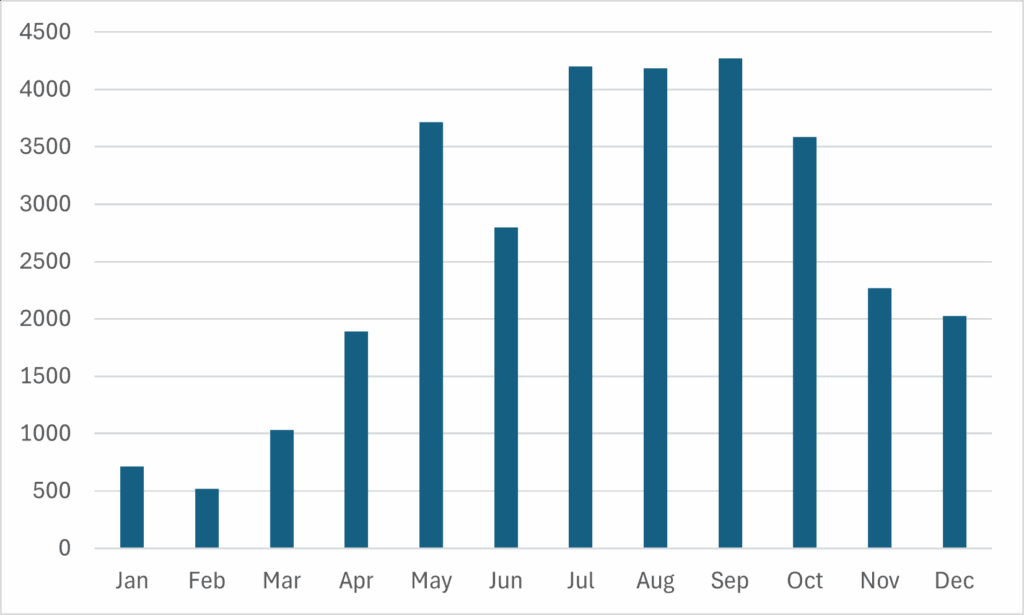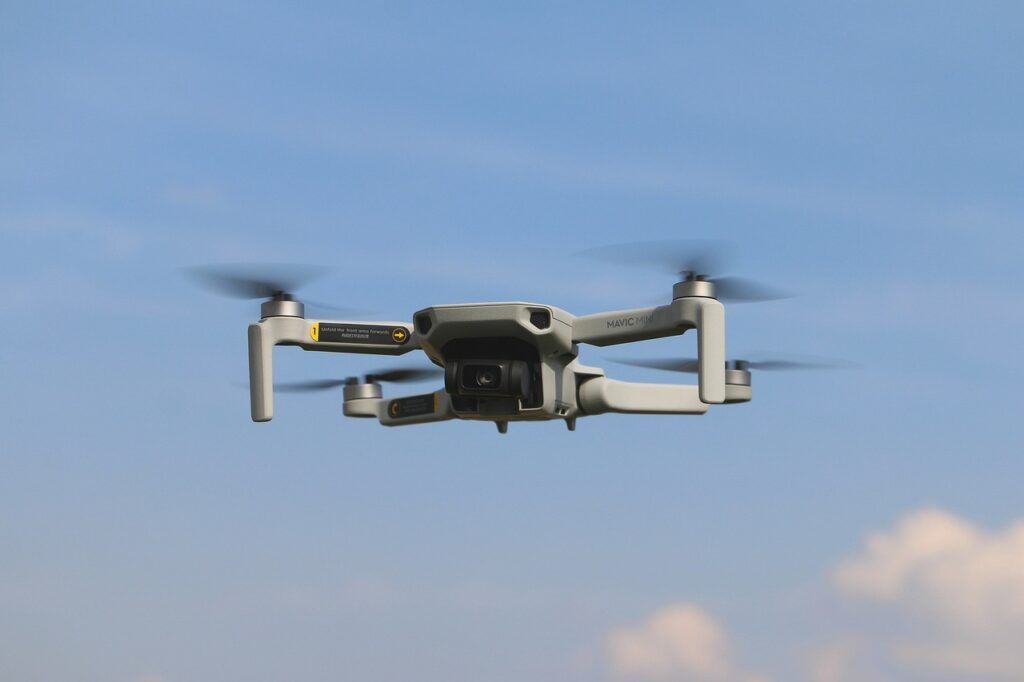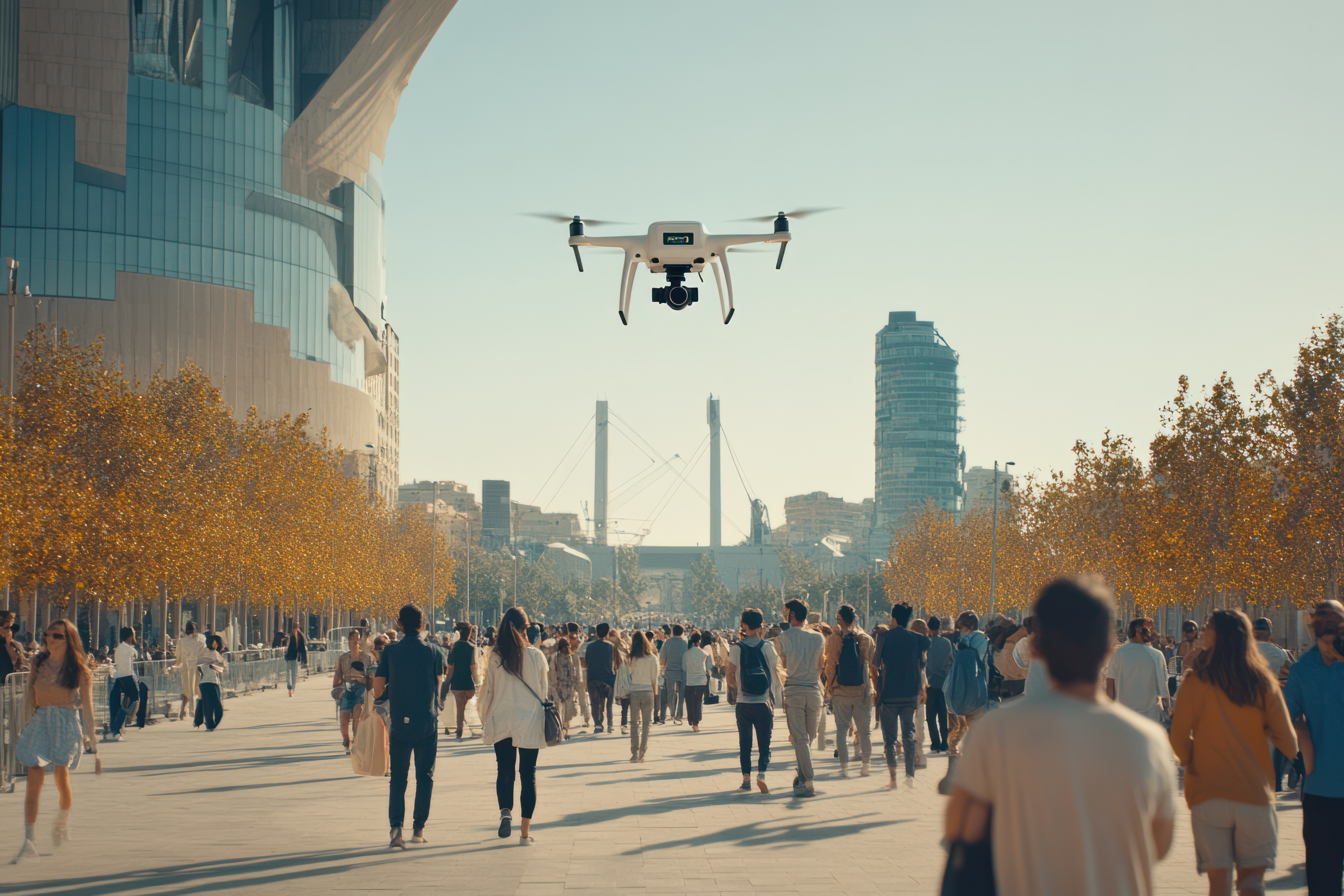As we welcome the new year, it’s the perfect time to reflect on our drone detection data from 2024. Let’s dive into the insights and trends captured by SkeyDrone’s detection system.
SkeyDrone’s Drone Detection system is powered by a network of distributed sensors, strategically placed across Belgium. These sensors detect drones by capturing the radio frequency (RF) signals they emit; including C2 link signals (communication between ground control station and the drone) and Direct Remote Identification (DRI) signals. During the summer, we expanded this network with several temporary deployments to cover multiple major outdoor events.
In total 31.196 drone flights were detected in 2024 by our drone detection network.
As expected, the majority of detections occurred during the summer months. The busiest days were the weekend of July 20-21, coinciding with the Belgian national holiday celebrations and the first weekend of Tomorrowland, with 363 and 319 detected flights respectively.

The most frequently observed drone type was the DJI Mini 2 with 5.005 detections, followed by the DJI Mini 3 (4.604 detections) and the DJI Mini 2 SE (3.745 detections). The DJI Mini series, being lightweight and considered low risk, is allowed to fly over people (except over assemblies of people) according to the EU drone regulations.

The 31.196 detected drone flights involved 8.876 different drones, resulting in an average of three to four flights per drone. The highest number of flights conducted by a single drone was 306, involving a DJI M350 RTK, a heavier drone, typically reserved for professional use.
The average flight duration was 4 minutes and 30 seconds. The longest detected drone flight lasted 1 hour and 59 minutes with a DJI Phantom 4 RTK drone. Since this drone type typically has a maximum flight time of around 30 minutes, it was probably connected to a tethered power supply, providing continuous power without relying on onboard batteries.
Other flights exceeding one hour were conducted by professional drones, remotely monitored and flying beyond visual line of sight (BVLOS). These BVLOS flights also recorded the longest distance of 80 kilometers between the drone and its pilot. The average drone – pilot distance was 548 meters, keeping in mind that the BVLOS flights significantly increase this number.
Open Category (or ‘low risk’) operations are limited both in height (max. 120 m or about 400 ft) and in distance (only visual line of sight (VLOS) flight, typically occurring up to 500 m from the remote pilot). Drone flights exceeding these height or distance restrictions should have occurred in the Specific Category of operations, requiring – in most cases – an operational authorisation from the Belgian Civil Aviation Authority.
The maximum height at which a drone was recorded, was 6.492 feet above ground level (or almost 2 kilometers). Fortunately, the average drone pilot flew at a safer maximum height of 271 feet above ground level (or 82 meters).
As we move into 2025, the data from 2024 provides valuable insights into drone activity and trends. SkeyDrone remains committed to advancing drone detection technology and ensuring the skies remain safe for everyone. We look forward to another year of innovation and progress in the field of drone detection!
Learn more about our drone detection solution here.




